Summary and Q&A of Coronavirus Aid, Relief, and Economic Security Act (the CARES Act)
Author: Jacob Franklin
Here is a brief summary of the tax implications of the CARES Act:
Recovery Rebates:
- $1,200 direct payment to each individual ($2,400 for Married Filing Jointly) plus $500 for each child
- Credit would phase out between $75,000 and $99,000 ($150,000 – $198,000 Married Filing Jointly)
- The credit will be fully refundable.
Delayed Payments for Payroll Taxes:
- The employer share of Payroll and Self-Employment tax payments through the end of 2020 would be deferred and paid over two years due 12/31/2021 and 12/31/2022.
Retirement Plans
- Individuals could withdraw up to $100,000 from retirement accounts through the end of 2020. The funds would be treated as a rollover if repaid within the next three years. If not repaid, they will be taxed as income over three years.
- Individuals would be eligible to make withdrawals of up to $100,000 if they are diagnosed with COVID-19, or if they are laid off, had reduced hours, or were somehow financially impacted by the pandemic.
- People affected by the pandemic would have an extra year to repay retirement plan loans if those loans were due in 2020.
- Waiver of Required Minimum Distributions for the 2020 calendar year.
Charitable Contributions
- Individuals would be able to take advantage of a new $300 deduction for charitable contributions available to those who do not itemize.
- The 60% limitation for charitable contributions would be suspended for 2020 (meaning a person could offset 100% of his or her taxable income with charitable contributions).
- The corporate limitation for charitable contributions would be lifted to 25% from 10% during 2020.
- The food inventory special deduction amount would also be lifted to 25% from 15% for 2020.
Excess Business Loss Limitation
- The limitation regarding excess business loss limitation has been removed for the 2018 through 2020 years.
Net Operating Losses
- Net Operating Losses carrybacks previously suspended by the Tax Cuts and Jobs Act, would be allowed for tax years 2018, 2019, and 2020. The carryback would be modified to 5 years.
- The 80% limitation on the use of Net Operating Loss for years beginning after January 1, 2018 would be suspended and allowed to fully offset taxable income through 2020.
Employee retention credit for employers subject to closure due to COVID-19
- Refundable payroll tax credit of 50 percent of wages paid to employees during the COVID-19 crisis.
- Employers who Qualify:
- Employers whose operations were fully or partially shut-down
- OR whose gross receipts declined by more than 50 percent compared to the same quarter in the previous year.
- Wages that Qualify
- More than 100 employees – qualified wages include wages paid to employees when they are not providing services due to COVID-19 related circumstances.
- Fewer than 100 employees – qualified wages include all wages paid to employees
- Amounts:
- First $10,000 of compensation (including health benefits)
- Credit is for wages paid or incurred between 03/13/2020 – 12/31/2020
Other Miscellaneous Tax Items:
- Allow corporations that have prior year AMT credits to recoup them faster
- Move the business interest limitation percentage of taxable income from 30% to 50% for tax years 2019 & 2020.
- Fix the Qualified Improvement Property Glitch allowing 15-year life and bonus depreciation
Contact Our Team
Jacob Franklin
Senior Manager
Email: jacob.franklin@bradymartz.com
Phone: 701-775-4685
Grand Forks, ND
Scott Hasbrouck
Shareholder
Email: scott.hasbrouck@bradymartz.com
Phone: 701-775-4685
Grand Forks, ND





